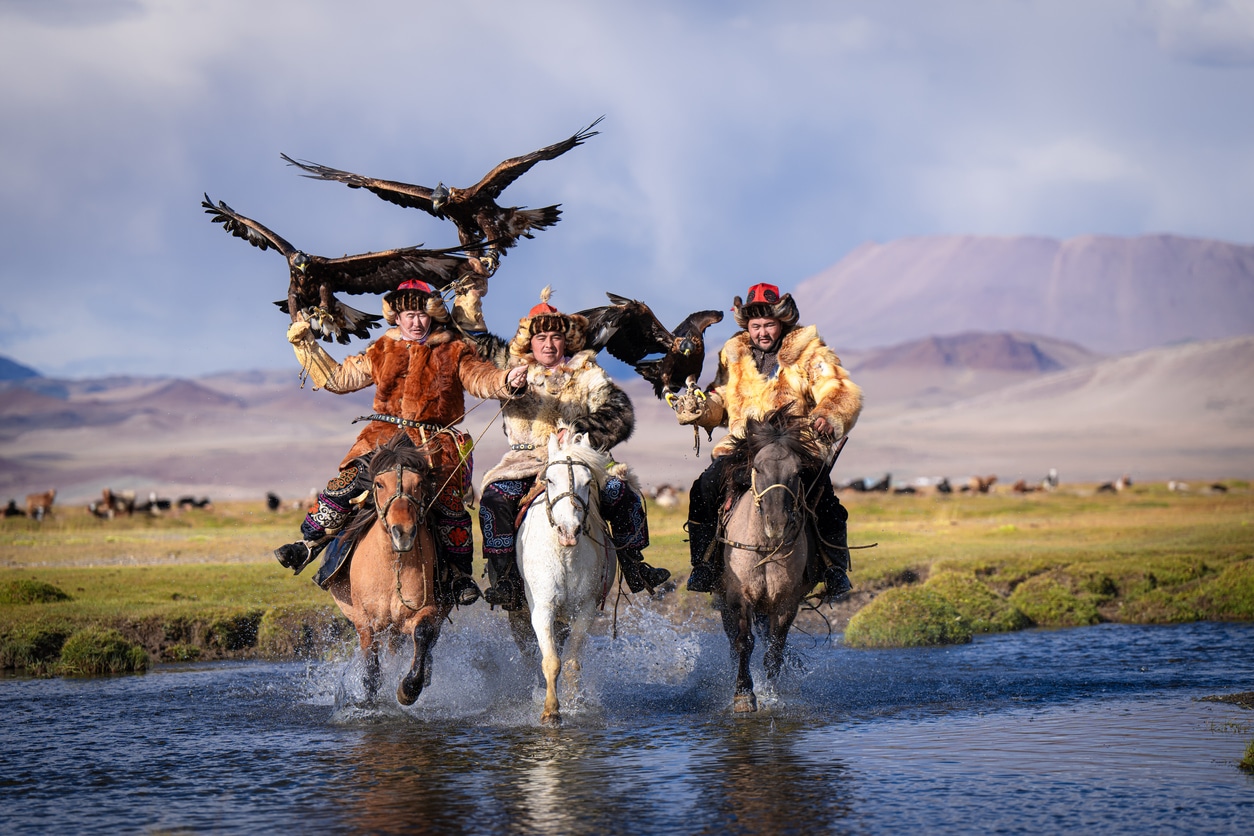What shapes Kazakh national identity? The answer is complex and personal, but one key element is the Kazakh national narrative. This includes the heroes and pivotal events taught in schools, the places central to the nation’s collective memory, and the language and beliefs that frame its worldview.
A national narrative goes beyond history: it is the people, events, places, and values that define how a nation understands itself. It lives in literature, film, and art, in monuments and place names, and in the calls to action used by leaders and activists.
This resource presents Kazakhstan’s national narrative in a concise, accessible way to help outsiders—tourists, students, and diplomats—grasp the cultural foundations of Kazakh society and better understand the Kazakh nation.
Note: Some Kazakhs prefer that their ethnicity be written as “Qazaq.” We recognize this but have chosen to use “Kazakh” as the more internationally recognized spelling for greater accessiblity. For more on Kazakhstan’s changing spelling, see our Talking Kazakh Phrasebook.
Religion, Language, and Ethnicity in Kazakhstan
Kazakhstan is a multiethnic and multicultural state. Ethnic Kazakhs make up about 71% of the population, Russians make up another 15% and the other 16% are Uzbeks, Ukrainians, Uyghurs, Germans, Tatars, Koreans, and others.
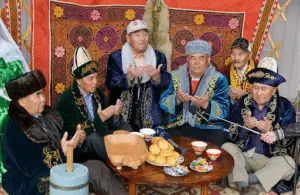
Traditionalism and modernism are major themes in Kazakh culture. Kazakhs see honoring their families and maintaining traditions as important, but equally as important is being a forward-facing, modern society. This is not a contradiction to the Kazakhs, but rather seen as giving them both roots to draw from and branches to spread to.
Sunni Islam is the professed faith for a majority of Kazakhs but most are quite laid back about religion. Having faith that the religion of one’s ancestors is the one true path to follow is generally considered much more important than visiting mosques or following religious dress codes.
Tengrism was the ancient religion of the Kazakhs, based on shamanism, animism, and ancestor worship. “Tengri” itself is believed to be a uniting force of nature that allows animals and places to directly affect a person’s development. When Islam arrived, it merged with Tengrism, leaving many Tengrist tenets central in Kazakh culture, especially respecting ancestors, family, and nature. Kazakh national music is based on describing, praising, and imitating nature, and many traditional stories teach that respecting nature and your surroundings will make you a better person and improve your fortune.
Speaking Kazakh is integral to being considered truly Kazakh. A Kazakh that doesn’t speak the language well is called “mankurt” or “one who forgot who he is.” For more on Kazakh language, see our Talking Kazakh Phrasebook.
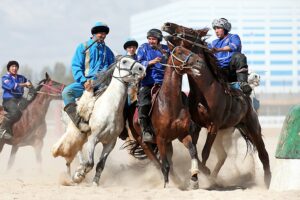
Nomadic heritage is central to Kazakh identity. Although the country is now 58% urban, the archetype of the warrior nomad is popularized in many local films and novels. Nomadic dishes such as horse sausage, plov, fermented camel’s milk, and baursak still define Kazakh cuisine. Further, equestrian sports (such as exhibited in the World Nomad Games), yurts, and animal husbandry, while increasingly detached from everyday life, are still considered true Kazakh tradition.
Zhuz, tribe, family, and ancestry unite Kazakhs. A “zhuz” is a horde or federation of tribes. There are 25 tribes total within three zhuz in Kazakhstan. Each tribe has a stereotype – i.e. the Naimans are supposedly good with money and the Argyns are courageous. The three zhuz are known as the “Great,” “Middle,” and “Junior.” There are (mostly good natured) jokes about which tribe and zhuz contributed most to the foundation of the Kazakh state. Each tribe consists of families and each individual should traditionally know seven generations of their ancestral lineage. A heavy focus on ancestry and progeny is a major reason why Kazakhstan’s fertility rates remain relatively high (2.4 births per woman) for a developed nation. Kazakhstan is thus also a relatively young nation, with an average age of just 32.
Geography and Place in Kazakh Culture
Certain places are of particular importance to the lived experience of Kazakhs and to Kazakh history and culture.
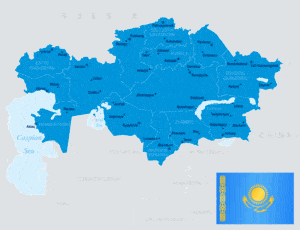
The Tian-Shan Mountains, sometimes called the “Celestial Mountains,” create a natural border with Kyrgyzstan and China at Kazakhstan’s southeastern edge. The rugged and beautiful landscape hosts a range of biomes and dense biodiversity. Sometimes referred to as a “Garden of Eden,” it is the likely origin point for modern apples, apricots, cherries, plums, grapes, figs, peaches, pomegranates, pears, almonds, pistachios, and walnuts. Ancient rock art and archeological sites abound. The range’s highest peak is the pyramidal Mount Khan Tengri, one of the holiest places in Tengrist mythology. The peak regularly features in Kazakh art and culture. The Tian-Shan range is also known as the site of many great battles of the Dzungar invasions from the 15th to 17th centuries and for hosting mountain pass trade routes that brought the riches of the Silk Road to Kazakh lands.
The Kazakh Steppe is by far the most dominant part of Kazakh geography and lend themselves exceedingly well to herding. Early nomads thrived here. In the rolling hills, one can often see seemingly indomitable nature spread out almost infinitely, with the sky spread massive overhead. Today, northern Kazakhstan is an agricultural heartland of crop farming, but most of the country remains dominated by herders.
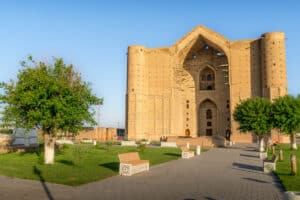
Turkestan is a region and city in the south of Kazakhstan. “Turkestan” once referred to a general Turkic homeland. However, it never existed as a united political entity. Today, the name is best associated with the city of Turkestan, one of the oldest in Kazakhstan, and the former capital of the Kazakh Khanate. Strongly associated with the rise of Islam, the city has an abundance of holy places including the mausoleum of Khodzha Akhmet Yassayi, who is regarded as one of the greatest leaders and thinkers of Sufism. Capitalizing on the city’s popularity with Islamic pilgrims, in 2018 Kazakhstan declared Turkestan the “spiritual capital of Kazakhstan” and its region’s political capital. Kazakhstan poured money into local transport, administrative, and tourism infrastructure. Tourism has blossomed, mostly from Muslim tourists living in Central Asia and Russia, and the Turkestan region is now one of Kazakhstan’s fastest growing and its most densely populated.
Sites of environmental concern in Kazakhstan stem largely from Soviet policies. Baikonur, for instance, is the cosmodrome that launched Yuri Gagarin to fame as the first man in space. Once a source of pride, the site is still in use, but now tainted by health and environmental concerns about massive amounts of fuel burning near the surrounding villages. The Aral Sea became one of history’s worst man-made disasters after its tributaries were diverted to agriculture. The sea shrank by 90%, devastating local economies and ecosystems and creating toxic storms of sand and salt. Semey, in Kazakhstan’s northeast, was a Soviet nuclear testing ground. People who lived within a wide radius of the city are still reporting health effects from the environmental harm it caused. The Caspian Sea is a source of much of Kazakhstan’s great mineral wealth and a strategic transport hub. It is also increasingly polluted and has been a source of international tensions as Azerbaijan, Iran, Kazakhstan, Russia, and Turkmenistan vie for profitable maritime borders. These and other locations have served as warnings and reinforced cultural values of respecting nature.
Major urban centers are part of the modern Kazakh experience as focal points of economic, political, and cultural power. Almaty is the largest. Green and cosmopolitan, Almaty is a youthful city and Kazakhstan’s main center for the arts, finance, and business. Astana is the new political capital. Built almost from scratch by the Nazarbaev administration, it is also a reminder of the country’s complex relationship with the former president. Filled with large, modern buildings spread across a large area, it has many scenic points, but is also difficult to navigate on foot. Kazakhstan’s third major city, Shymkent, is lesser known internationally and is primarily an industrial center and rail hub. The largest city in the growing Turkestan Region, however, it is developing more tourism and cultural infrastructure today.
Historical Heroes
The following people have played pivotal roles in Kazakh history and can be thought of as “founding fathers.” You may see monuments to them and places named for them.
Janibek Khan and Kerei Khan established the first independent Kazakh state, the Kazakh Khanate, in the 15th Century, having rebelled against the rule of the Uzbek Nomadic State. They led their tribes east, established an alliance with the Mongols, convinced other tribes to join them and, by the end of their reign, had a population of about 150,000 under their rule. Very little is known about either man – including birth and death dates. What is known is that both were Turkic with Mongol heritage, possibly extending back to Genghis Khan himself. In modern Kazakhstan, they are revered as the original founders of the Kazakh nation.
Tole bi, Kazybek bi, and Aiteke bi worked to codify customary law and mediate tribal disputes in the troubled 17th and 18th centuries. “Bi” is a Kazakh honorific signifying a wiseman, and someone who was traditionally sought out to be a judge or moderator. Tole bi, Kazybek bi, and Aiteke bi were, respectively, from the Great Zhuz, the Middle Zhuz, and the Junior Zhuz, into which the Kazakh Khanate had fractured. This period was a troubled one for the Khanate, particularly due to the Dzungar invasions and new internal divisions. However, thanks to the “three bi,” the zhuz stayed united and even defeated the invading forces. Although the Khanate eventually fell, the Kazakhs themselves remained a united force, thanks in part to the reforms the bi championed and the examples they set, often using humor to set aside their differences. Their legacy promotes the values of fairness, wisdom, and national solidarity.
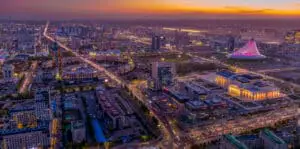
Kabanbay Batyr was an 18th century military leader who fought against the Dzungars, a Mongol people that, at the time, controlled a powerful regional empire. He led the efforts to free Eastern Kazakhstan and led the defense of Turkestan, a holy city and the political capital, among many other important battles. His story represents the importance of fighting for an independent state and shows that Kazakhs are capable of great glory on the battlefield. He is upheld as a symbol of bravery, patriotism, and unity. In every major Kazakh city, there is at least one street named for him and throughout Kazakhstan there are a number of monuments commemorating Kabanbay Batyr – usually on a horse, leading the way. In 2000, a mausoleum was built in his honor over what has been historically regarded as his final resting place, about a 40-minute drive from central Astana.
Abai Kunanbaev is the most famous Kazakh poet. He lived from 1845 to 1904, composing about 170 original works and producing more than 50 translations of world literature into Kazakh. Many of his works espouse Islamic values; he helped expand and solidify Islam’s influence over Kazakhstan. Abai’s most famous work is Kara Sozder, a collection of 40 works that reflect on various subjects and aspects of life. He is often quoted and cited as a source of spiritual and intellectual inspiration.
Alash Orda was a social movement and political organization most active from 1917-1920. It included many revered individuals such as Akhmet Bokeikhanov, Alikhan Baitursynov, Mirjaqip Dulatuli, Eldes Omarov, Seidazim Kadyrbayev, and Sagidym Doschanov. They fought for an independent Kazakh homeland, with education conducted in Kazakh, and with a government focused on the needs of the Kazakh people. They founded a government (unrecognized internationally) after the 1917 revolution that tried to realize these goals. The movement was anti-Communist, arguing that, for Kazakhs, unity based on nationality rather than class made most sense. In 2023, a biopic of the movement, Oyan, Kazakh! (Wake Up, Kazakh!), was released to critical acclaim. The title was a rallying cry for Alash Orda and is still used by those calling for political action. More on Alash Orda from GeoHistory.
Nursultan Nazarbayev is a controversial and integral figure to modern Kazakhstan. As Kazakhstan’s first president, he ruled for three decades, bringing Kazakhstan out of the chaos of the 1990s much faster than most other post-Soviet states. He is credited with establishing Kazakhstan’s sovereignty, presiding over many years of high economic growth, and positioning the country on the global stage. Although his approval ratings remained consistently high, most of his party’s landslide victories were achieved under questionable circumstances. In 2019, Nazarbayev resigned after widely supported, sustained protests over rising prices and the need for better infrastructure and housing. Despite resigning, he initially retained considerable power by holding onto positions such as Chairman of the Security Council, the Chairman of his dominant political party, and his ephemeral title of “Father of the Nation” (“Elbasy”). This lasted until 2022, when another round of protests allowed his successor to strip him of these titles and initiate legal action in an attempt to claw back billions that had been awarded to his family and to nonprofits controlled by him. Open public discussion then surfaced related to his former administration’s possible role in the murder or disappearance of past political opponents. Although he likely still resides in Kazakhstan, his exact location is a closely guarded secret to protect him from potential protests and enemies. Today, Nazarbaeyev’s legacy is still visible everywhere, with many streets named for him, statues dedicated to him, paintings of him hung in buildings, and institutions bearing his name. He represents the establishment of an independent and successful state, but one also overshadowed by corruption that prevented that state from fully supporting its citizens. The nation is still processing these events. They are major part of the modern Kazakh experience.
Historical Events
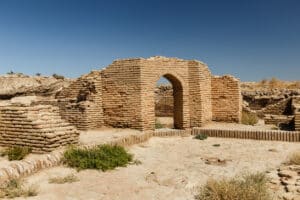
The Kazakh Khanate (1465–1847) was established in 1465 by Janibek Khan and Kerei Khan, who led their people out of what was considered to be the unreasonable rule of the Uzbek Nomadic State to establish a new khanate. They convinced thousands of others to do the same and, after moving east, struck an alliance with the neighboring Mongols, acts that set up a new independent and strong state. The Kazakh Khanate reached its highest point in the 16-17th century under the long rule of Kasym Khan, a descendant of Jabinek Khan, who gave the Kazakhs their first code of laws, greater development of written Kazakh (then using Arabic script), and their greatest territorial expansion, eventually taking even Tashkent. Kazakhs see the Khanate as the birth of their ethnic nation as well as a time of great heroes and great achievements to be celebrated.
The Kazakh–Dzhungar Wars (1643–1756) began shortly after a confederation of Oirat Mongol tribes united to become the Dzhungar Khanate. Known for military prowess, they expanded, threatening China, Russia, and the Kazakh tribes. The wars eventually weakened the Khanate, but also saw the Kazakhs unite against a strong enemy and earn valor in many hard-fought battles. This period of suffering is remembered today as a time of patriotism and heroism.
Colonization by the Russian Empire (18th-19th centuries) began as the khans of the three zhuz struggled under external threats and increasing internal divisions. In 1726 Abulkhair Khan, one of the leaders of Junior Zhuz, wrote to Empress Anna of Russia seeking a defensive alliance to protect his territory from Dzhungar raids in exchange for fealty. The Middle and Great Zhuz followed suit. Many argue that the khans were simply seeking an alliance, but as was often the case in history, the Russians used this to establish a greater military presence and then political control. By 1740, all khans were appointed by Russian officials and Russian fortresses were built to maintain control over the territories. In 1847, the khanate was dissolved and absorbed into Russia. This is seen in most Kazakh histories today as a necessary but ultimately lamentable exchange of freedom for protection.
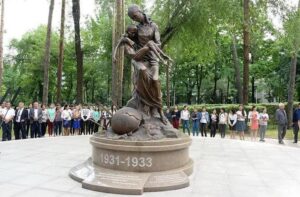
The Famine (1930-1933) was caused by Stalin’s forced collectivization of the 1930s and a multiyear drought. Many point, however, to actions taken by Soviet officials that made a bad situation tragic, denying or blocking food aid, for instance. An estimated 1.5-2 million Kazakhs died. Kazakhs made up most of the rural population and were thus hardest hit by the effects of collectivization. More likely to die than other ethnicities, they were reduced from 60% to about 38% of the population in their homeland. This has long been seen as the single greatest collective suffering that Kazakhs have ever experienced. May 31 is now observed as the Day of Remembrance for Victims of Political Repression and Famine. The issue has also been increasingly politicized with some political groups calling for the domestic and international recognition of The Famine as a genocide against Kazakhs. Most of these groups also call for reduced relations with Russia. Kazakh writer Valery Mikhailov wrote a book called Chronicle of the Great Djute based on the events of Asharshylyk.
The Jeltoksan Revolt (1986) started as a student protest in Almaty against the appointment of Gennady Kolbin as First Secretary of the Communist Party in Kazakhstan. Kolbin replaced Dinmukhamed Konaev, an ethnically Kazakh politician who had led the republic since 1960. Kolbin himself had no connections with Kazakhstan or its language or culture. The authorities framed this as a paid protest to support a displaced, corrupt leader. The students insisted that they were defending Kazakh autonomy. After the authorities tried to physically remove the protestors, violence ensued. The next day, civil unrest spread throughout Kazakhstan, with thousands participating and scores arrested or killed. The revolt is often cited as the beginning of a new national consciousness that led to over 90% of Kazakhs supporting independence in 1991. In 2006, a monument called The Dawn of Liberty was erected in central Almaty to those who participated in the revolt.
Qantar (2022) is Kazakh for “January,” an innocuous name adopted for what were traumatic events. Peaceful protests that began in rural areas as liberalized energy prices soared soon turned into street riots in Almaty and Astana that called for political change – in particular demanding the removal of Nursultan Nazarbayev from the post of Security Council of Kazakhstan. President Tokayev took extreme measures to quell the situation, shutting down Internet and telephone networks, instituting a curfew and martial law with the whole of Almaty and Astana cordoned and the military given orders to use lethal force. Russia sent 3000 paratroopers in support of the government and additional forces were sent by other Collective Security Treaty Organization members Armenia, Belarus, Kyrgyzstan, and Tajikistan. During the week-long violent unrest and crackdowns, 227 people were killed and over 9,900 were arrested, according to Kazakh officials. The unofficial numbers are much higher. The events are remembered as one of national trauma. Much of the population’s mobility was restricted and uncertainty for the future ran high. For some, the outcome of this was an indication that Tokayev’s government was now firmly in control. For others, it was an indication that much more work was needed to develop civil society and to influence government policies to take the best interests of the populace into consideration.
Diversity in Kazakhstan
Of course, not everyone in Kazakhstan is Kazakh. The stories and experiences of a country’s ethnic minorities are also part of the lived experience that defines it as a state.
Kazakhstan government has actively developed a policy of multiethnicity, to show that its minorities are welcome and that the country is open for foreigners and foreign cultures. Indeed, historically it was the case for Kazakhstan to be a place of multiethnicity. Each May 1, Kazakhstan celebrates The Day of Unity, a state event meant to recognize and promote peace among Kazakhstan’s diverse ethnic groups.
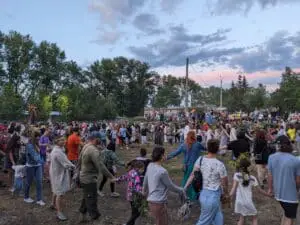
Russians and Ukrainians arrived mostly as part of Soviet programs to establish factories, settled farming, schools, and loyal administration. Today, those that remain in Kazakhstan are concentrated in the far northern regions, where most intensive crops are also produced. They are mostly Orthodox, atheist, or irreligious and most speak only Russian. Shortly after the Russia’s 2022 mobilization efforts for its war in Ukraine began in September, 2022, Kazakhstan recieved a large influx of Russian immigrants, mostly arriving to its major cities. In response, Kazakhstan tightened its immigration policy, closing a loophole that allowed Russians to stay indefitely so long as they left the country once every 90 days. This forced the new immigrants to either apply for residency or depart. Most of the post-war arrivals have left for countries with more flexible immigration policies or returned home.
Germans, Koreans, and Poles arrived mostly as forced exiles under the USSR, departed far from their homeland as their entire ethnicity was deemed a threat. Kazakhstan was given the euphemistic title “laboratory of friendship” as about 1.2 million deportees arrived. Traditional Kazakh hospitality and charity were fundamental to helping them. They are mostly Catholics, Protestants, or irreligious and most speak only Russian.
Post-independence emigration has slashed the populations of all the above minorities. Populations peaked in the 1980s but, with the fall of the USSR, many migrated out of Kazakhstan, often either to major Russian cities or to their “homelands.” Most of these emigrants had grown up in the Kazakh SSR and, upon arriving to their homelands, had well-documented troubles trying to integrate due to language and culture shock. Many either returned to Kazakhstan or emigrated again to Russia. The still-substantial populations that remain are today still relatively well integrated into Kazakh society.
Uzbeks and Uygers have long been indigenous minorities and are growing populations today. Uzbeks, now 3.3% of the population, have migrated from Uzbekistan seeking greater economic opportunity and social freedoms. Uygers, now 1.5% of the population, have immigrated from China fleeing persecution there. Both are Turkic peoples and traditionally Muslim and have integrated into society relatively well. They are concentrated in the southern border regions.
Multi-ethnic families were once rare in Kazakhstan, where the dominant mode of thought was that marrying within “one’s own kind” was the best way of preserving culture and identity. However, today mixed marriages between Kazakhs and Russians, Ukrainians, Uzbeks, Koreans, and other minorities are becoming more common and slowly better accepted. Interestingly, however, the Soviet tradition of printing ethnicity on state ID has survived and may now be more problematic. A single ethnicity is chosen by the child’s father at birth.

Bi- or trilingualism is common. About 80% of the population speaks Kazakh and about 82% speaks Russian. This began under the Soviets, but has continued today as Russian is still mandatory in state schools. Further, national events and celebrations are hosted in both Kazakh and Russian. Street signs, store labeling, and advertising are typically in both languages. Even many cities and villages in Kazakhstan have two names: one Russian, one Kazakh, used interchangeably. This supports the Russian-speaking minorities, but also supports economic and political ties with Russia. Recently, this policy has been tempered with English added to school curriculums and English now appearing on street signs in major urban centers. The Kazakh alphabet is being transitioned from Cyrillic to Latin. Since the war in Ukraine began, there has been some reaction against Russian triggered by the large number of Russian immigrants who arrived in Kazakhstan, do not speak Kazakh, and have too often rudely expected their hosts to speak Russian as a matter of course.
You’ll Also Love
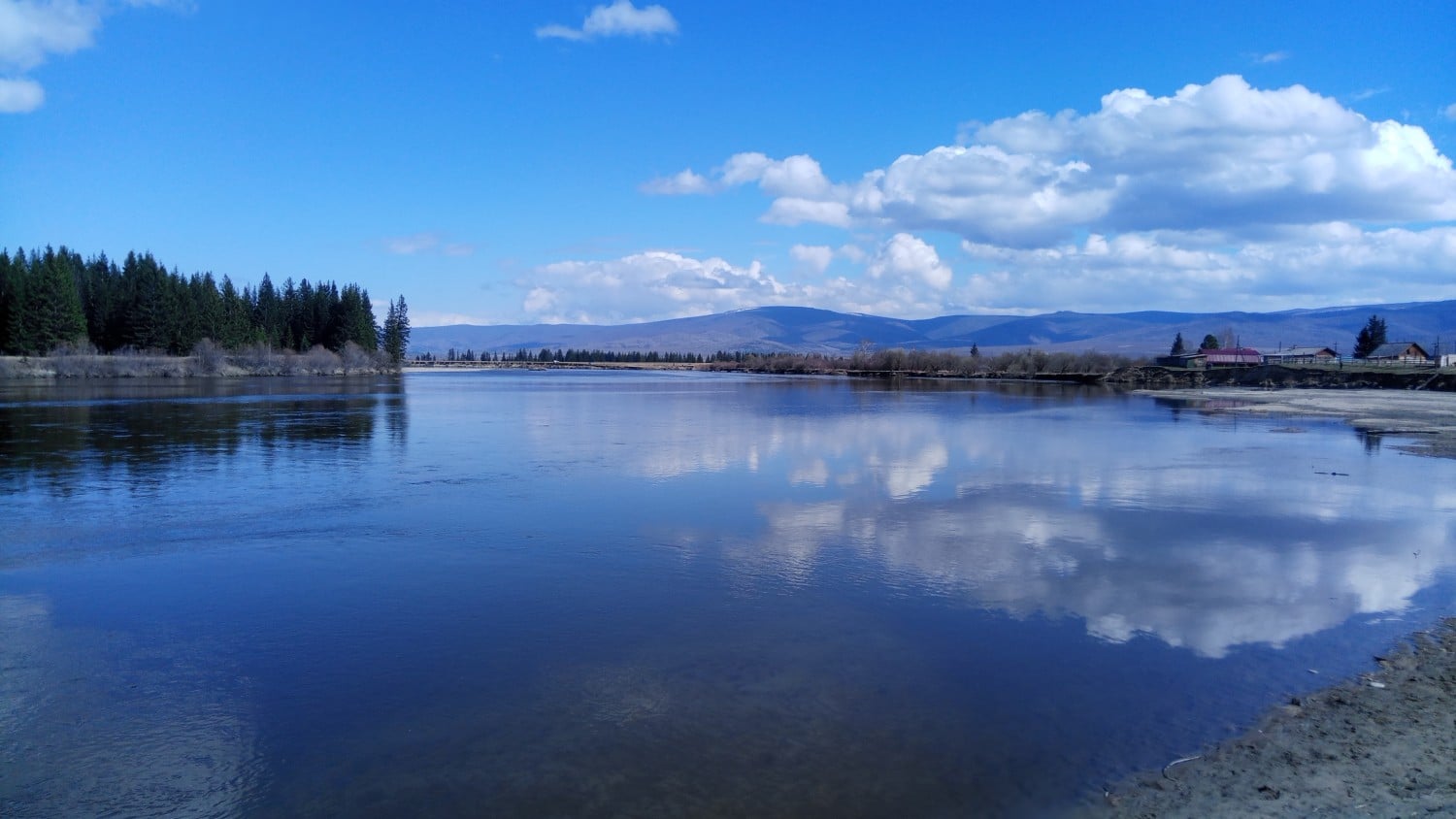
Buryats on Buryatia
The Republic of Buryatia is located in South Central Siberia sharing Lake Baikal with Irkutsk Oblast. Roughly 500,000 people identify as Buryat making the Buryats the largest indigenous group in Siberia. The Buryat people are descents of several different ethnic groups including Mongolian and indigenous Siberian. Because of this, Buryat culture is an interesting and […]
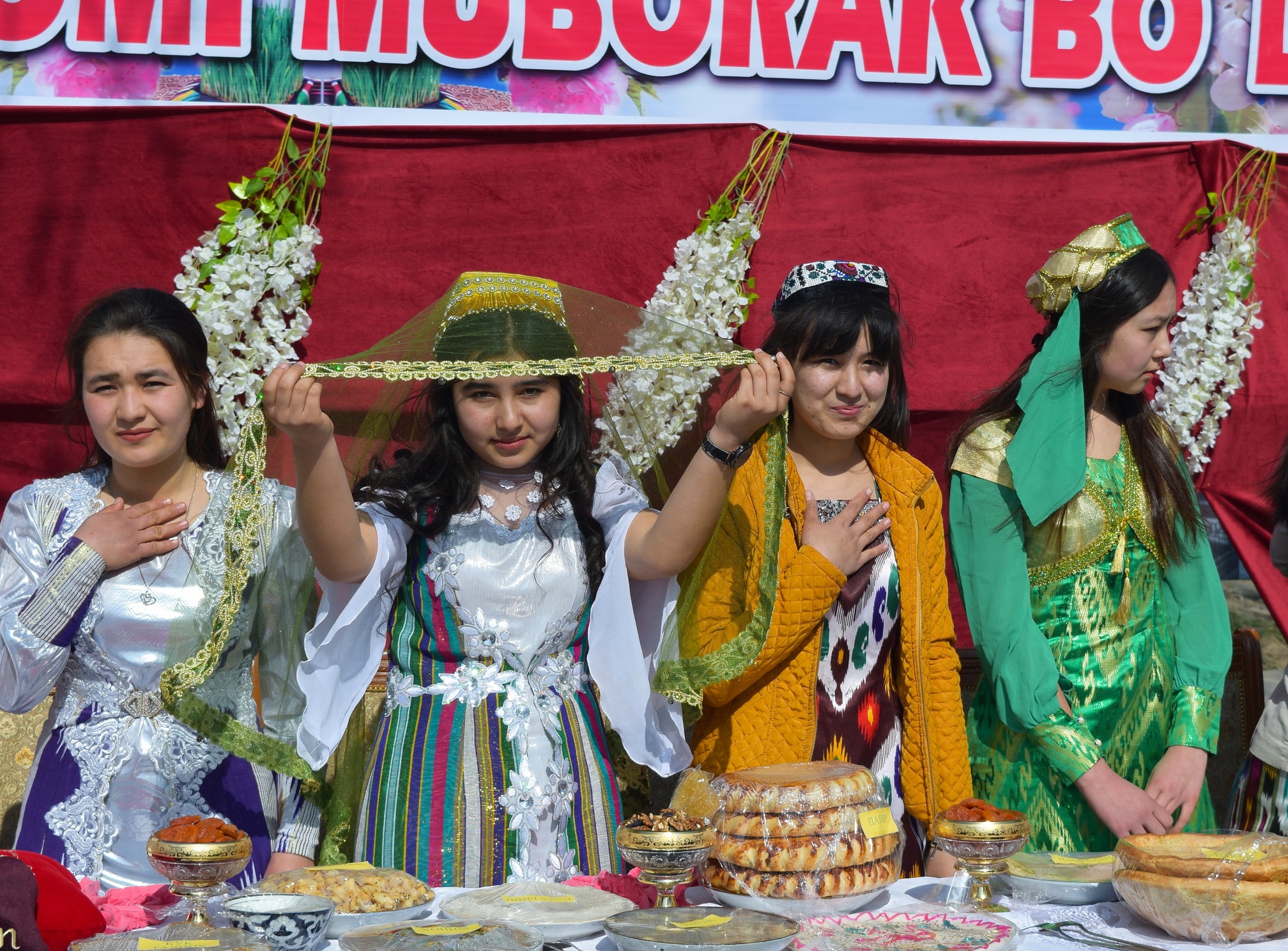
Navruz, Nooruz, Nowruz: The Ancient Spring New Year of Central Asia
Navruz is a spring solstice celebration that marks the beginning of the New Year according to the traditional Persian calendar. It has been a beloved holiday for some 3,000 years, surviving cultural change caused by centuries of tumultuous history. It was once celebrated on the vernal equinox but is now celebrated on the set date […]

Exploring Uzbek Culture First-Hand
Students on SRAS’s Central Asian Studies program have an extended travel component that immerses them in the diverse histories, cultures, and societies of Central Asia. The following is a recounting of an extended trip to Uzbekistan that students took as part of their program in 2019. Our trip to Uzbekistan was a long time […]
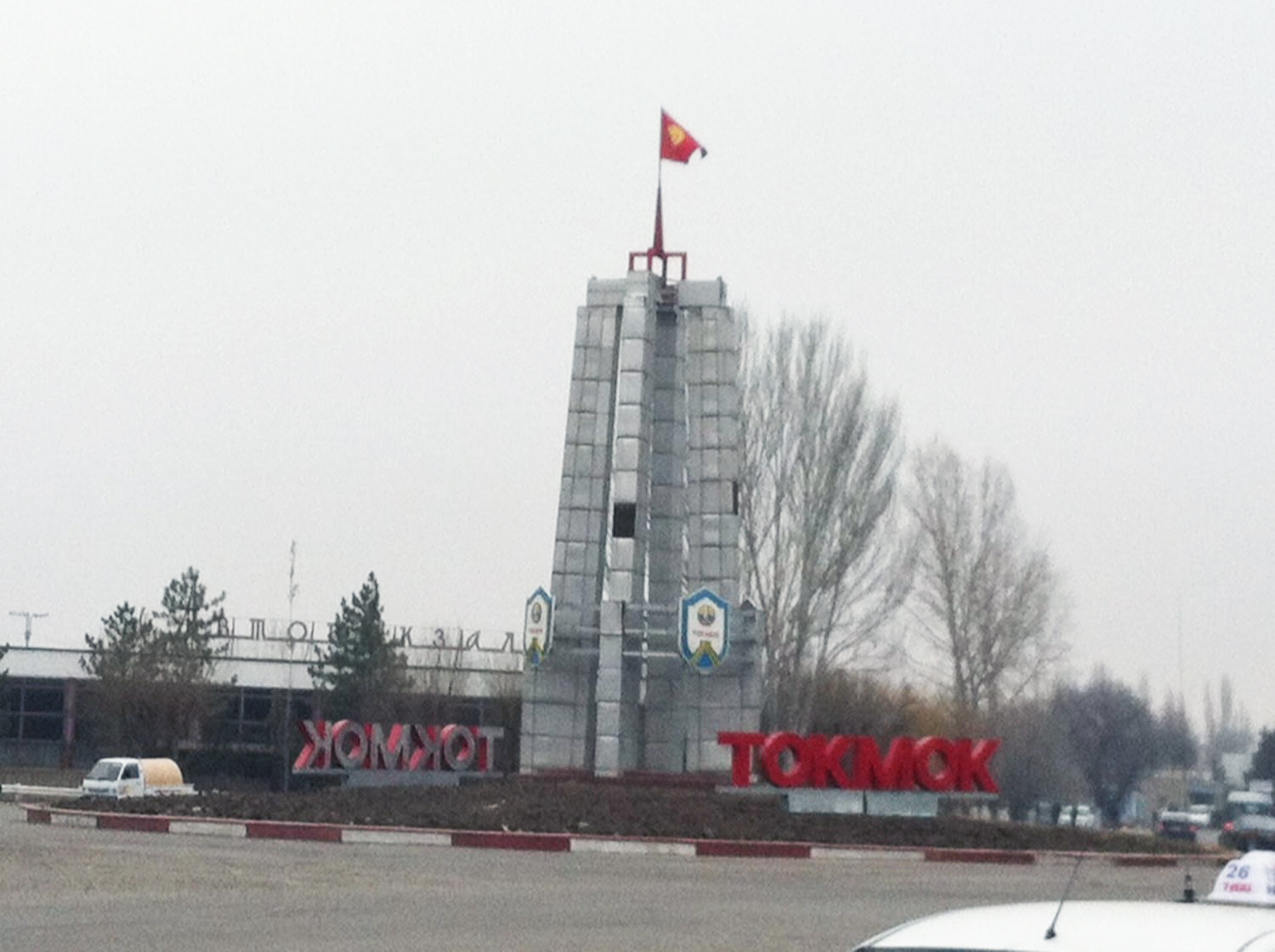
A Chechen Journalist on the Chechen Diaspora in Kyrgyzstan and Being Chechen Today
In Bishkek this past week, Chechen journalist Kamila Zhabrailova talked to SRAS students about the history and culture of Chechnya, the Chechen diaspora in Kyrgyzstan, and her attitude towards the Boston marathon bombings. The Tsarnaev brothers are of Chechen descent and had spent some of their childhood in Kyrgyzstan, meaning that this was an especially […]

Russian MiniLesson: The Russian Soul and Related Russian Vocabulary
Many well-known people from various countries have acknowledged that Russia and the Russians have unique features that can be difficult to explain. For example, British Prime Minister Winston Churchill once said that “Россия – это головоломка, завернутая в тайнувнутри загадки” (Russia is a riddle wrapped in a mystery inside an enigma). A part of this mystery is […]

